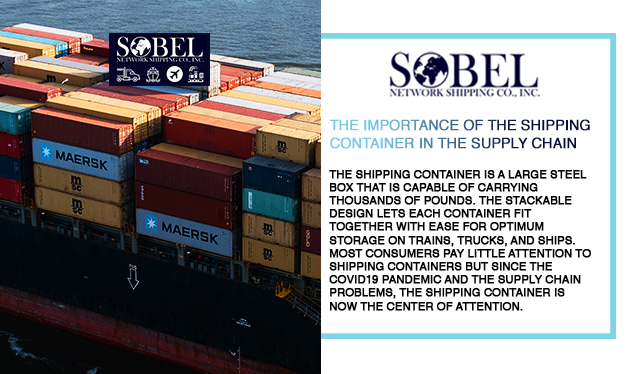The shipping container is a large steel box that is capable of carrying thousands of pounds. The stackable design lets each container fit together with ease for optimum storage on trains, trucks, and ships. Most consumers pay little attention to shipping containers but since the COVID19 pandemic and the supply chain problems, the shipping container is now the center of attention.
Shipping terminals are now clogged with an overabundance of shipping containers. There is also a severe shortage of empty containers which is sending exporters scrambling to find available ones to meet the demands.
The situation has reached a dire state with US politicians pushing the government to start regulating shipping in an effort to ease the bottlenecks. A bipartisan group of House members recently passed legislation that would enable the Federal Maritime Commission (the largest international ocean transportation agency in the U.S.) to prioritize any empty containers for manufacturers and farmers.
Interestingly, commerce was once not a slave to shipping containers. The first container ship hit the high seas in 1956 but it was not until the 1980s that shipping containers for ocean freight truly became popular. Global trade quickly grew, and businesses realized the benefits of shipping containers. The wide use of the containers helped reduce the cost of shipping and made the process relatively easy.
All shipping containers come in a standardized size. They measure 20 feet by 40 feet long. On one shipping container, thousands of shipping containers can be loaded with ease.
Marc Levinson, a historian who focuses on the global shipping industry states in an interview with Recode, “Previously, most of the goods that moved in containers were manufactured goods made in one country and were being exported to another country. But starting in the late 1980s, businesses figured out how to combine cheaper shipping thanks to containers with cheaper telecommunications and improved computing to create long-distance supply chains.”
“The modern shipping container was first used on domestic shipping routes in the United States in 1956 and has been used internationally since 1966. Like a lot of innovations, it took businesses a while to figure out how to take advantage of them. But starting in the late 1980s, businesses figured out how to combine cheaper shipping — thanks to containers — with cheaper telecommunications and improved computing to create long-distance supply chains.”
“This was a big change from what existed before. Previously, most of the goods that moved in containers were manufactured goods made in one country and were being exported to another country. But with these cost changes, it became possible to spread out suppliers among countries and to do each part of the manufacturing process where it was most efficient.”
“Manufacturers and retailers began building these sorts of supply chains in the late 1980s.There might be several stages of these sorts of shipments from one place to another before the finished goods are shipped to the end user. That was an entirely new form of trade and is really responsible for these long and complicated supply chains.”
The Journey of The Shipping Container The journey of a shipping container is very straightforward:
- The shipping container is loaded with products by a factory or logistics warehouse/freight forwarder.
- The container is transported via a truck or train to the port.
- Storage of the container takes place on a patio near the docks.
- After a ship arrives at a port, the container is moved to the dock and loaded onto the
vessel.
- The container is lifted using a crane to position the box onto the ship.
- The loading of the ship can take a few hours or several days depending on the size of
the ship.
- Once loaded, the ship sets sail on a specific route.
- It takes about 22 days for the container to reach its destination when things run
smoothly.
- The containers are unloaded at their destination and the ship then travels back to its
homeport.
The shipping container is just one of the main cogs in the entire logistics process, but its job cannot be understated. It serves a valuable role in ensuring that goods are safely transported to global destinations.


